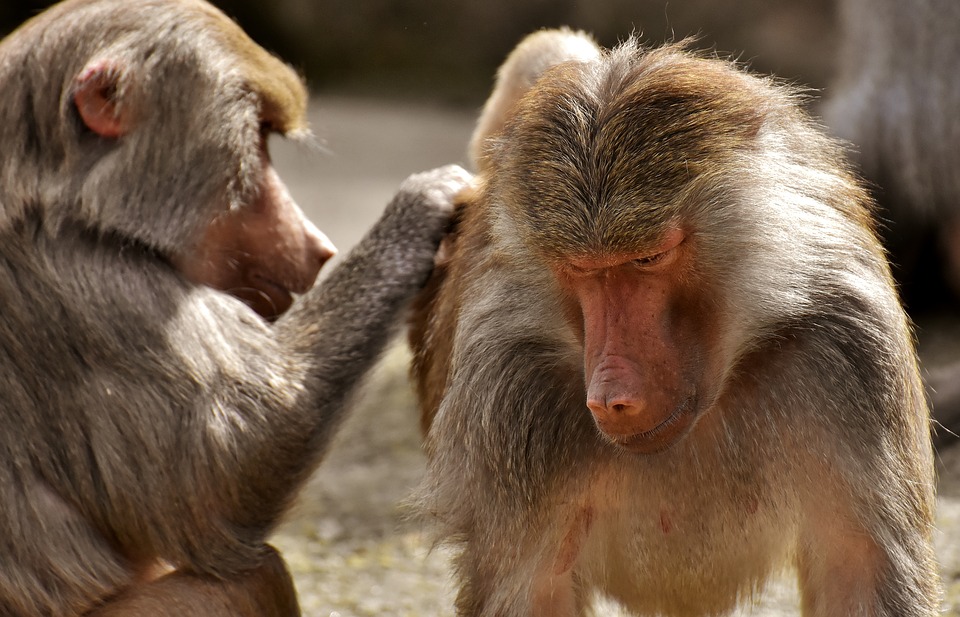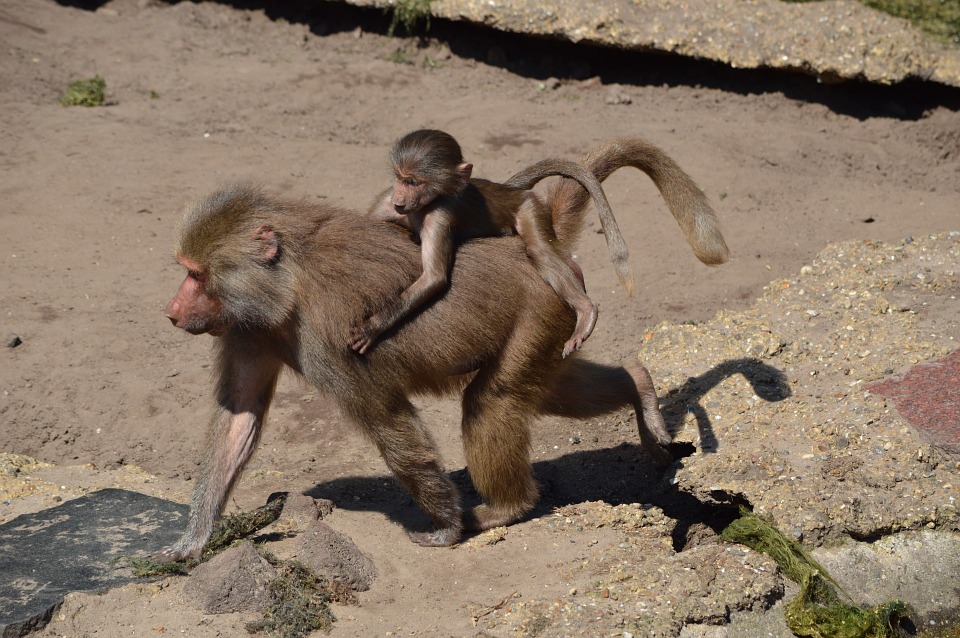 Scientists have discovered that baboons can produce five distinct vowel sounds, which are strikingly similar to our own human vowel sounds. This discovery suggests that language skills actually evolved tens of millions of years earlier than previously thought. It is now thought that our pre-human ancestors could have been using meaningful language over 25 million years ago.
Scientists have discovered that baboons can produce five distinct vowel sounds, which are strikingly similar to our own human vowel sounds. This discovery suggests that language skills actually evolved tens of millions of years earlier than previously thought. It is now thought that our pre-human ancestors could have been using meaningful language over 25 million years ago.
Evolution of the larynx
Until recently, some scientists thought that human speech only evolved some 70,000 to 100,000 years ago due to changes in the development of the larynx or voice box, which made it sit higher up in the throat.
Other primates have a lower larynx, which makes them unable to produce such complex sounds.
Due to this problem in enunciating the vowel sounds, it was thought that meaningful speech was unique to humans and only came late in our evolution.
Baboons use over 2000 distinct sounds
Recent discoveries by scientists analysing baboon behaviour suggest that this long-held assumption is entirely wrong.
The research team at the National Centre for Scientific Research in Rousset sur Arc, France listened to around 1,335 spontaneous vocalizations produced by 15 Guinea baboons in different social contexts.
The scientists recorded over 2,000 distinct calls, grunts and barks and discovered that the sounds that baboons make are very similar to our human vowel sounds.
Five distinct vowel sounds
The 2,000 different sounds made by the baboons were analysed and found to contain five distinct vowel sounds, just like human language.
Humans are able to make complex vowel sounds because they can control the exact positioning of the tongue. It was thought that no other animal had the anatomical complexity to have such precise control over these muscles.
However, in the online journal Plos One, the research team explained that they found the tongue muscles of the baboon are very similar to those of the human tongue. This confirms the baboons’ physical capability of producing complex vowel sounds.
Tongue anatomy the same as humans
Dr Louis-Jean Boë said: “Examining the vocalisations through acoustic analyses, tongue anatomy and modelling of acoustic potential, we found that baboons produce sounds sharing the f1/f2 formant [sound frequencies] structure of the human vowels.”
This suggests that our pre-human ancestors would probably have developed the physical capacity for language before they split off from the ancestors of baboons 25 million years ago.
It seems certain that the capacity for meaningful and intelligent speech is not restricted to modern humans and came about much earlier in our evolution than previously thought.
We think it is fascinating that animal studies can reveal so much about language development.
Share your thoughts on animals and the evolution of language
What else do you think animals can teach us about language?
Do you feel your own pets speak their own language? How do they try to communicate with you?
Have you witnessed any interesting animal language in the wild?



I personally think that part of the evolution of language is everything that revolves around us, in general. Finding out that animals specifically Baboons, have developed a way to communicate with one another even before humans could communicate properly, just shows how we are all interlinked and we all share a part in the process of evolution.